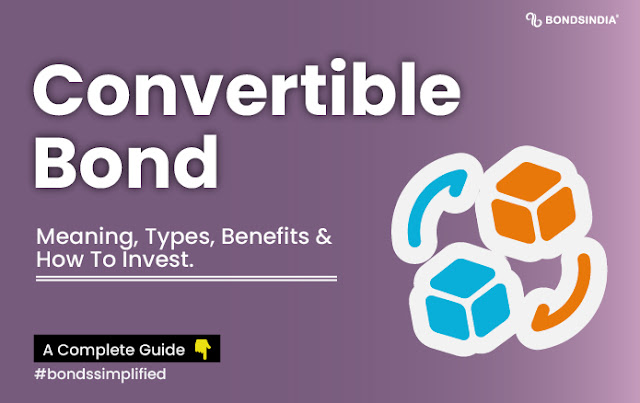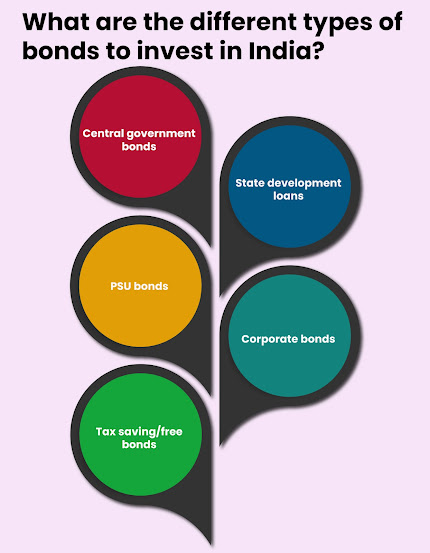The Rise of Convertible Bonds in India's Financial Market
Are you ready to embark on a thrilling journey into the heart of India's financial market? Buckle up, because today we are diving deep into the world of convertible bonds – a rising star that is captivating investors across the nation. As India's economy booms and new opportunities emerge, this innovative form of financing has become an irresistible option for both companies seeking capital and investors craving high returns.
So join us as we unravel the secrets behind convertible bonds' meteoric rise in India, exploring their benefits, risks, and impact on the ever-evolving landscape of finance. Get ready to be captivated by this fascinating phenomenon that is revolutionizing India's financial market!
Introduction to Convertible Bonds
Convertible bonds are one of the most popular financial instruments in India's financial market. They offer investors the dual benefits of fixed income and equity appreciation. Convertible bonds are debt instruments that can be converted into equity at a predetermined price and date.
The popularity of convertible bonds has grown in recent years, as they offer a number of advantages over traditional debt and equity instruments. For example, convertible bonds allow companies to raise capital without diluting existing shareholders' equity. Additionally, convertible bonds offer flexibility in terms of maturity and interest payments, making them an attractive option for companies with uncertain cash flow projections.
Despite their many advantages, there are also some risks associated with investing in convertible bonds. For instance, if the underlying stock price falls below the conversion price, the bondholder will not be able to convert the bond into equity and may suffer losses. Additionally, if interest rates rise after the bond is issued, the value of the bond will decline.
Convertible bonds are a versatile financial instrument that can offer investors both fixed income and potential equity upside.
Different Types of Convertible Bonds in India
In India, convertible bonds are becoming an increasingly popular financial instrument. There are different types of convertible bonds available in the market, each with its own set of features and benefits.
The most common type of convertible bond is the zero-coupon bond. As the name suggests, this type of bond does not offer any interest payments. Instead, it is issued at a discount to its face value, and investors receive the full face value when the bond matures.
Another type of convertible bond is the exchangeable bond. This type of bond can be converted into shares of the issuing company's stock at a predetermined price. Exchangeable bonds are often used by companies as a way to raise capital without diluting their existing shareholders' equity.
yet another type Of Convertible Bond Is The Step-up Coupon Bond Which pays periodic Interest payments Until It matures, At which point The investor receives The full par value Of The Bond. These Interest payments Are typically higher Than Those on standard Bonds, making Them more Attractive To investors.
There are also reverse convertibles, which are essentially short-term loans that pay periodic interest payments until they mature. At maturity, instead of receiving the full face value of the loan, investors receive shares of stock in the issuing company. Reverse convertibles can be useful for companies that need to raise capital quickly but do not want to dilute their equity.
Benefits of Investing in Convertible Bonds
Convertible bonds are a type of debt instrument that can be converted into equity shares at the discretion of the bondholder. They offer the benefits of both debt and equity instruments, providing investors with potential upside while minimizing downside risk.
Convertible bonds have become increasingly popular in India's financial market, as they offer a number of advantages over traditional debt and equity instruments. For one, convertible bonds provide investors with potential upside through the option to convert into equity shares at a later date. This flexibility allows investors to participate in the growth of a company without having to bear the full risk of an equity investment. Additionally, convertible bonds tend to have lower interest rates than traditional debt instruments, making them more attractive to yield-seeking investors.
Convertible bonds can help companies raise capital without diluting existing shareholders' equity. This is because only a portion of the bonds are typically converted into shares, meaning that existing shareholders retain a larger stake in the company. Convertible bonds thus offer a win-win solution for companies and investors alike.
Tax Implications of Convertible Bonds
Despite their popularity, there are some tax implications to consider before investing in convertibles bonds. When a company issues a convertible bond, the Internal Revenue Service (IRS) treats it as both debt and equity. This means that the interest payments on the bond are considered taxable income, but the conversion feature is not.
If you hold the bond until maturity, you will only owe taxes on the interest payments you receive. However, if you convert the bond into shares of stock before it matures, you will owe capital gains taxes on any appreciation in the value of the stock.
The tax implications of convertible bonds can be complex, so be sure to consult with a financial advisor or tax professional before investing.
Recent Trends in the Indian Financial Market for Convertible Bonds
In the past few years, there has been a rise in the number of convertible bonds issued in India's financial market. This is due to a number of factors, including the growing size and sophistication of the Indian economy, as well as the increasing global demand for Indian debt.
One of the most notable recent trends has been the rise in popularity of so-called " Masala Bonds ". These are bonds that are denominated in Indian rupees, but are issued by foreign companies. They have become increasingly popular with investors looking for exposure to the Indian debt market, but without the currency risk associated with other types of bonds.
Another trend that has been gaining traction is the use of convertible bonds as a tool for mergers and acquisitions (M&A). In many cases, convertible bonds can be used to provide financing for an acquisition without incurring too much debt on the balance sheet of the acquiring company. This can be especially helpful for smaller companies that may not have ready access to capital markets.
Looking ahead, it is likely that convertible bonds will continue to play an important role in India's financial market. With interest rates expected to remain low and investor appetite strong, we expect to see more issuance of these securities in the coming years.
Strategies and Tips for Investing in Convertible Bonds
Convertible bonds are becoming an increasingly popular investment in India's financial market. Here are some strategies and tips for investing in convertible bonds:
1. Do your research: Make sure you understand the basics of convertible bonds before investing. Know what you're buying, and be comfortable with the risks involved
2. Consider your goals: What are you looking to achieve by investing in convertible bonds? Is it capital appreciation, income generation, or both? Having a clear goal in mind will help you make better investment decisions.
3. Consider the company: When considering a convertible bond investment, take a close look at the issuing company. Evaluate its financial health, business model, and prospects for growth. Also consider the type of convertibility offered (partial or full).
4. Consider the market: Convertible bonds tend to be more volatile than other types of bonds, so pay attention to market conditions when making your investment decisions. If the markets are uncertain or unstable, it may be best to wait for a more favorable time to invest.
5. Diversify your portfolio: Don't put all your eggs in one basket – diversify your portfolio by including other asset classes such as stocks, mutual funds, and real estate. This will help reduce risk and improve returns over the long term.
Conclusion
Convertible bonds have become increasingly popular in India's financial market and offer many advantages that other bond types do not. These include lower risk, greater liquidity than traditional bonds, and the potential for higher returns. As more investors look to capitalize on these benefits, convertible bonds are quickly becoming a staple of Indian finance. With their unique features and advantages, it is clear why convertible bonds are rapidly gaining traction in India's financial markets and why they will continue to be an important part of investing for years to come.





Comments
Post a Comment